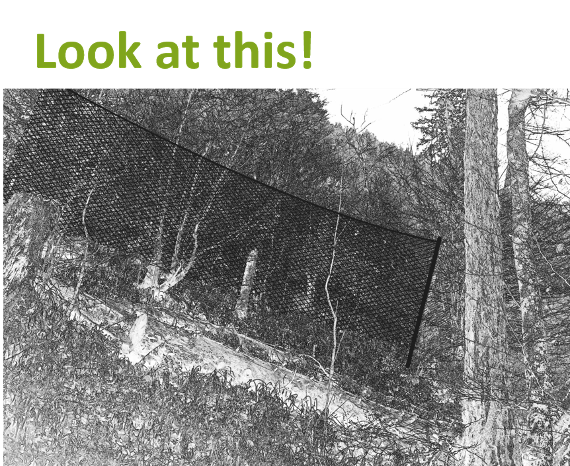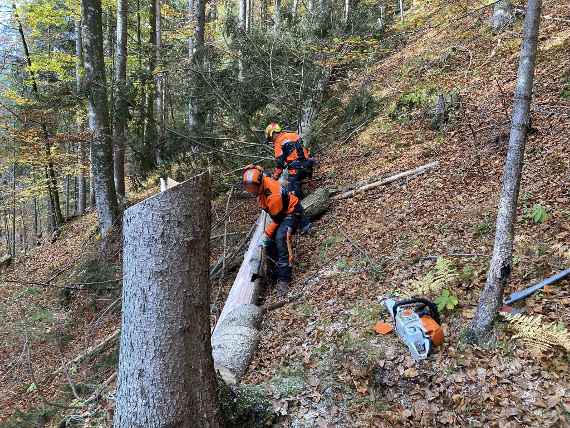A stable and vital forest offers the simplest and most cost-effective protection against natural hazards in the mountains. The forest soil acts as a natural buffer against floods, the trees as a "green" barrier against rockfall, and the roots have a strengthening effect against erosion. However, the protective forest also has limits in the occurrence of particularly large and intense events. In such cases technical protective measures such as rockfall protection nets or avalanche barriers provide support. The interaction of all these measures forms the so-called technical forestry system.
Firmly anchored to the ground rockfall protection nets act as a dynamic “curtain” against the impact of falling rocks and boulders. The brackets are movably mounted and held in position by strong steel cables. The curtain itself consists of a mesh of steel wires. If a stone is stopped by the net additional braking elements act on the ropes to convert the fall energy.
Sustainable management in the protective forest
To keep the protective forest vital and, above all, to prepare it for the warmer climate in the future, directing interventions in the forest stand are particularly important. By felling a tree, new light conditions are available on the forest floor and thus space for young, new trees. To achieve the best protective effect of the forest, the stand should be rich in structure. This means that large trees grow next to small ones. A good mixture of tree species should also be ensured.


